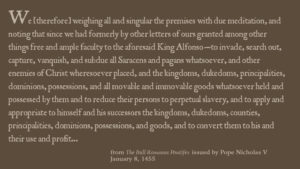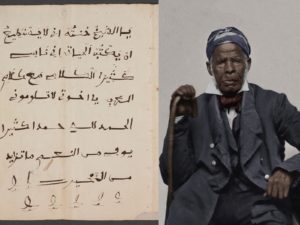By J.W. Qiyamah
Before a proper study of the “African ” population in America can be conducted, there are missing variables in the equation as far as conventional studies go. Those variables are the fact that the African presence predates colonialism, slavery ( which both were executed under the jurisdiction of the Dotrine of Discovery).

The second variable is the pre colonial Identity used by the ancestors of the African population in America.
The roots to the identity of the pre colonial African in America can be found in American legislation. If one were to observe the various negro acts ( for example article four to the negro of south Carolina) these acts clearly state that the term negro/black shall be confined to enslaved ancient BERBERS (moors). This misconception of the identity used by pre colonial Africans as well as the time of their arrival in the Americas are the missed variables that block the full scope of African American historical studies.
The research of Professors Ivan van Sertima and Dana Reynolds has shown via 13 levels of evidence (from linguistic to skeletal) that not only was the west African present in ancient America, the African as a whole did not use the terms Negro/Black nor African as an international identity.
From the treaties of North Africa to West African treaties with the early United States it is evident that Africans used the Moorish Identity on a political, international level. This can easily be seen post slavery. Political actions such as the Free sundry moors act of South Carolina (where former slaves rejected the negro identity, lobbied to maintain their Moorish Political Identity) is clear proof of the political and cultural stance of the ancestors to modern day African America.
The pre Saudi Arabian verses the post Saudi Arab. Not many laymen understand nor comprehend that the Arabian prior the Saudi control was considered part of present day Africa. In fact when the Anthropology team of Dana Reynolds conducted its research in Arabia it was shown in Arabiya text ( the original Arabian dialect used by ancient Africans (such as Mansa Musa) that Mandinkan and All of west Africa migrated from Arabia to The Mahgrib (west Africa). This was confirmed by interviews conducted with modern Mandinkans of West Africa as well in the writings Mende scholar Omar Ibn Said ( who was enslaved in Senegal and taken to North Carolina). Omar Ibn Said’s have recently been inducted to the Library of Congress.


Professor Reynolds also discovered (via skeletal examination) that the most ancient remains of Arabians were an exact match to that of Africans of The Mahgrib ( West Africa) but also a match to over 80 percent of African Americans.
This is in direct reflection of the various negro codes/act made in American legislation. The Negro acts clearly stipulate that the term negro shall be confined to enslaved ancient Berbers. When that is coupled with the scholastic definition of BERBER ( inhabitants of Arabia that migrated to Africa prior to the rise of Prophet Muhammad), the path to true African history is made crystal clear.
Dana Reynolds ( professor of anthropology at the university of Chicago) as well as her predecessor Ivan van Sertima has also recorded the west African empire of Mansa Musa was present in ancient America. ” The evidence of this claim is evident by the countless Mandinkan scripts found on Ancient American landmarks such the pyramids of Meso America and the giant Olmec head carvings of ancient South America” Professor Reynolds stated in an interview conducted by MurakushSocitey.org ” Until the African American scholarship recognizes that the original inhabitants of Arabia migrated and populated Africa roughly fifty thousand years ago, the vast and rich history of African American can never be fully expressed beyond antebellum and Jim Crow” continued Reynonds.
Reprented from The Moro Asia journal of Afro Asitic studies 2017
Sources
MurakushSociety.org, United States library of Congress, The negro act of South Carolina, The Free sundry moors act of South Carolina. The journal of Omar Ibn Said, “They came before Columbus by Ivan van Sertima ” “The Golden Age of the Moors” by Ivan van Sertima (forward by Dana Marniche Reynolds). “Introduction to Moorish Treaties” by Shyaam M. Kushmire and El-Emir Mujjadid. Murakush Society interview with Dana Reynolds
